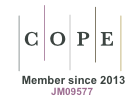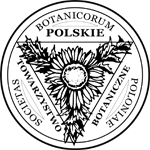Assessment of Genetic Diversity and Population Structure of Tunisian Barley Accessions (Hordeum vulgare L.) Using SSR Markers
Abstract
Keywords
References
Agrama, H. A., & Eizenga, G. C. (2008). Molecular diversity and genome-wide linkage disequilibrium patterns in a worldwide collection of and its wild relatives. Euphytica, 160(3), 339–355. https://doi.org/10.1007/s10681-007-9535-y
Azartamar, F. S., Darvishzadeh, R., Ghadimzadeh, M., Azizi, H., & Aboulghasemi, Z. (2015). Identification of SSR loci related to some important agro morphological traits in different oily sunflower (Helianthus annuus L.) lines using association mapping. Crop Biotechnology, 5(10), 73–87.
Bwalya, E. C., Marzougui, S., Mwangi, E., Wooseon, C., & Lee, M. C. (2020). Genetic diversity analysis and population structure of some African and Asian finger millet (Eleusine coracana L.) accessions using expressed sequence tags-simple sequence repeat (EST- SSR) markers. International Journal of Environment, Agriculture and Biotechnology, 5(3), 643–646. https://doi.org/10.22161/ijeab.53.17
Cronin, J. K., Bundock, P. C., Henry, R. J., & Nevo, E. (2007). Adaptive climatic molecular evolution in wild barley at the Isa defense locus. Proceedings of the National Academy of Sciences of the United States of America, 104, 2773–2778. https://doi.org/10.1073/pnas.0611226104
DeWoody, J. A., Honeycutt, L., & Skow, L. C. (1994). Microsatellite markers in white tailed deer. Journal of Heredity, 86(4), 317–319. https://doi.org/10.1093/oxfordjournals.jhered.a111593
Elakhdar, A., Abd EL-Sattar, M., Amer, K., Rady, A., & Kumamaru, T. (2016). Population structure and marker-trait association of salt tolerance in barley (Hordeum vulgare L.). Comptes Rendus Biologies, 339(11), 454–461. https://doi.org/10.1016/j.crvi.2016.06.006
Evanno, G., Regnaut, S., & Goudet, J. (2005). Detecting the number of clusters of individuals using the software STRUCTURE: A simulation study. Molecular Ecology, 14, 2611–2620. https://doi.org/10.1111/j.1365-294X.2005.02553.x
Hamza, S., Hamida, W. B., Rebaï, A., & Harrabi, M. (2004). SSR-based genetic diversity assessment among Tunisian winter barley and relationship with morphological traits. Euphytica, 135, 107–118. https://doi.org/10.1023/B:EUPH.0000009547.65808.bf
Jilal, A., Grando, S., Henry, R. J., Lee, L. S., Rice, N., Hill, H., Baum, M., & Ceccarelli, S. (2008). Genetic diversity of ICARDA’s worldwide barley landrace. Genetic Resources and Crop Evolution, 55(8), 1221–1230. https://doi.org/10.1007/s10722-008-9322-1
Kalinowski, S. T., Taper, M. L., & Marshall, T. C. (2007). Revising how the computer program CERVUS accommodates genotyping error increases success in paternity assignment. Molecular Ecology, 16(5), 1099–1106. https://doi.org/10.1111/j.1365- 294X.2007.03089.x
Medimagh, S., Felah, M. E., & Gazzah, M. E. (2012). Barley breeding for quality improvement in Tunisia. African Journal of Biotechnology, 11(89), 15516–15522. https://doi.org/10.5897/AJB11.2786
Mwangi, E. W., Marzougui, S., Sung, J. S., Bwalya, E. C., Choi, Y. M., & Lee, M. C. (2019). Assessment of genetic diversity and population structure on Kenyan sunflower (Helianthus annus L.) breeding lines by SSR markers. Korean Journal of Plant Resources, 32(3), 244–253. https://doi.org/10.7732/kjpr.2019.32.3.244
Ovesná, J., Kučera, L., Vaculová, K., Milotová, J., Snape, J., Wenzl, P., Huttner, E., Kilian, A., Martelli, G., & Milella, L. (2013). Analysis of the genetic structure of a barley collection using DNA diversity array technology (DArT). Plant Molecular Biology Reporter, 31, 280–288. https://doi.org/10.1007/s11105-012-0491-x
Pasam, R. K., Sharma, R., Walther, A., Özkan, H., Graner, A., & Kilian, B. (2014). Genetic diversity and population structure in a legacy collection of spring barley landraces adapted to a wide range of climates. PLoS ONE, 9, Article e116164. https://doi.org/10.1371/journal.pone.0116164
Peakall, R., & Smouse, P. E. (2012). GenAlEx 6.5: Genetic Analysis in Excel. Population genetic software for teaching and research – An update. Bioinformatics, 28, 2537–2539. https://doi.org/10.1093/bioinformatics/bts460
Perrier, X., & Jacquemoud-Collet, J. P. (2014). DARwin [Computer software]. http://darwin.cirad.fr/
Poets, A. M., Fang, Z., Clegg, M. T., & Morrell, P. L. (2015). Barley landraces are characterized by geographically heterogeneous genomic origins. Genome Biology, 16, Article 173. https://doi.org/10.1186/s13059-015-0712-3
Pompanon, F., Bonin, A., Bellemain, E., & Taberlet, P. (2005). Genotyping errors: Causes, consequences and solutions. Nature Review Genetics, 6, 846–847. https://doi.org/10.1038/nrg1707
Pritchard, J. K., Stephens, M., & Donnelly, P. (2000). Inference of population structure using multi locus genotype data. Genetics, 155, 945–959. https://doi.org/10.1111/j.1471-8286.2007.01758.x
Stanton, M. A., Stewart, J. M., Percival, A. E., & Wandel, J. F. (1994). Morphological diversity and relationships in A-genome cottons, Gossypium arboreum and Gossypium herbaceum. Crop Science, 34, 519–527. https://doi.org/fqqfcr
Tondelli, A., Xu, X., Moragues, M., Sharma, R., Schnaithmann, F., Ingvardsen, C., Manninen, O., Comadran, J., Russell, J., Waugh, R., Schulman, A. H., Pillen, K., Rasmussen, S. K., Kilian, B., Cattivelli, L., Thomas, W. T. B., & Flavell, A. J. (2013). Structural and temporal variation in genetic diversity of European spring two-row barley cultivars and association mapping of quantitative traits. The Plant Genome, 6, 1–14. https://doi.org/10.3835/plantgenome2013.03.0007
Varshney, R. K., Graner, A., & Sorrells, M. E. (2005). Genic microsatellite markers in plants: Features and applications. Trends in Biotechnology, 23, 48–55. https://doi.org/10.1016/j.tibtech.2004.11.005
Vigouroux, Y., Glaubitz, J. C., Matsuoka, Y., Goodman, M. M., Sanchez G., J., & Doebley, J. (2008). Population structure and genetic diversity of New World maize races assessed by DNA microsatellites. American Journal of Botany, 95, 1240–1253. https://doi.org/10.3732/ajb.0800097
Yahiaoui, S., Cuesta-Marcos, A., Gracia, M. P., Medina, B., Lasa, J. M., Casas, A. M., Ciudad, F. J., Montoya, J. L., Moralejo, M., Molina-Cano, J. L., & Igartua, E. (2014). Spanish barley landraces outperform modern cultivars at low-productivity sites. Plant Breeding, 133, 218–226. https://doi.org/10.1111/pbr.12148
Zhang, M., Mao, W., Zhang, G., & Wu, F. (2014). Development and characterization of polymorphic EST-SSR and genomic SSR markers for Tibetan annual wild barley. PLoS ONE, 9, Article e94881. https://doi.org/10.1371/journal.pone.0094881
DOI: https://doi.org/10.5586/aa.7343
|
|
|







